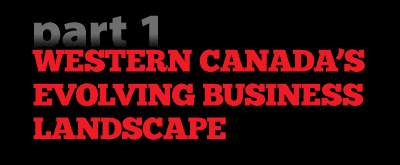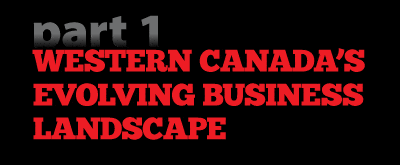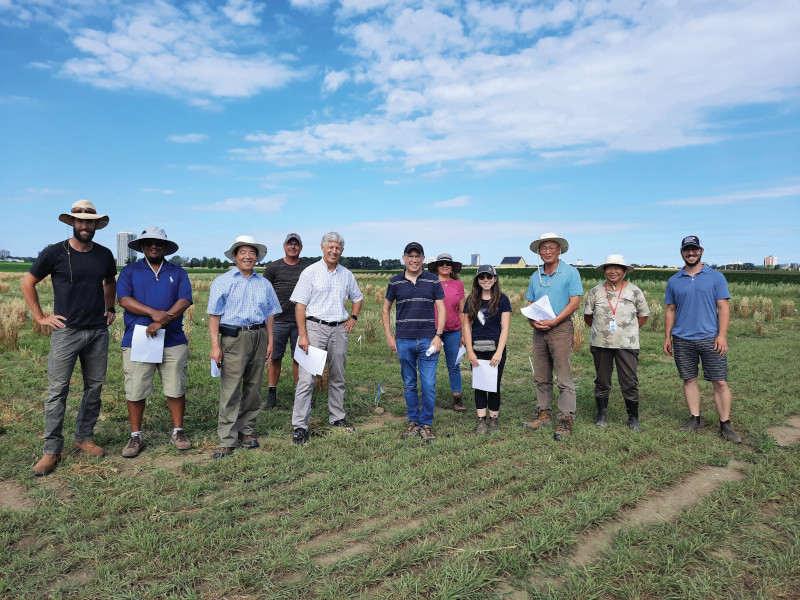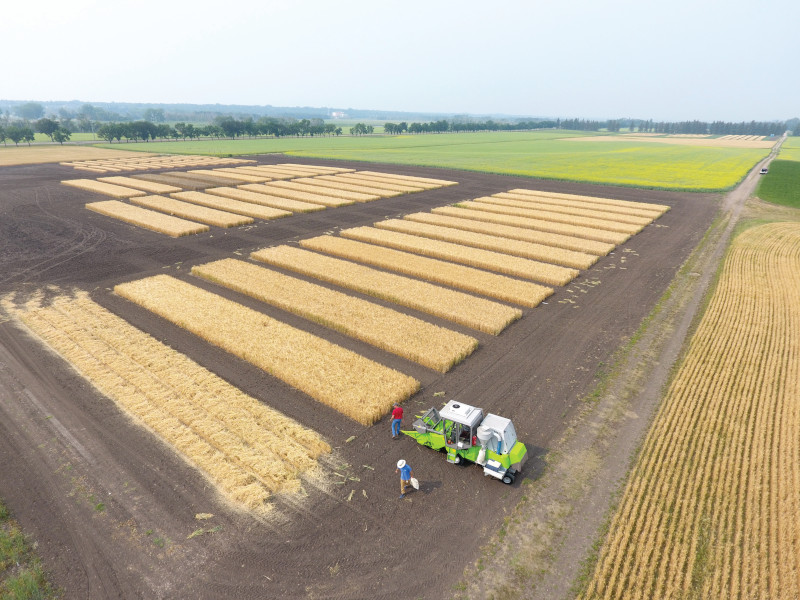
August 1 marked the start of a new grain marketing era in Canada. What impact will this have on the seed industry in Canada and, specifically, on new variety research? This is part one of a three part series exploring the impact of the new marketing environment on seed.
As open marketing for western Canadian wheat and barley officially began on August 1, many farmers were already harvesting, and with most expecting bumper yields and decent prices, their thoughts have turned to where, when and how to sell that grain.
However, what effect will marketing freedom have at the other end of the agricultural cycle, as farmers prepare for another crop year and decide what seed varieties they will buy? What will new varieties look like and where will future breeding and research efforts be focused? What role will seed companies and agri-retailers play in this new environment?
More communication throughout the value chain and much stronger market signals are two of the big changes that some industry experts are predicting. “There will be more direct communication between buyer and seller, and that should provide us with more information on what the end-user is looking for and how that can be gained through a specific wheat variety or class,” says Peter Entz, assistant vice-president of Seed and Traits for Richardson International Ltd. “The market will provide a stronger signal as to what varieties farmers may want to grow in the future.”
New Varieties
Seed companies and their retail partners will be at the forefront of developing new varieties that address the current and future needs of the market. “Companies like Richardson will be more active in terms of bringing varieties of wheat and malt barley to the market,” says Entz. “Not that we will be doing the breeding or variety development work, but just focusing and expanding the work we do with our cereal seed partners today.”
As the market has increasing influence on what farmers decide to plant, seed companies are sure to put their research dollars into developing new varieties that have more disease resistance, higher yields and are adapted to Canadian prairie growing conditions. “Seed companies are going to have more influence on what happens in Canada now and they are going to be able to put their shoulder behind the research and marketing,” says Dennis Squair, president of Agri-Trend Marketing Inc. “You can have seed companies developing what the millers are looking for and that’s a semi-hard wheat. That will build up enough demand for wheat varieties that fit that need and will develop the wheat market faster and bring a lot more profitability to the producer.”
That could mean more acres of red winter wheat or semi-hard wheat to serve the international bread market, as well as specialty soft white wheat for the ethanol industry, says Squair. “We have had a lot of hard Canadian Western Red Spring wheat in Western Canada and it’s a specialized market,” he says. “I think we are going to see more high-yielding, lower quality wheat in Western Canada because those types of wheat are more profitable.”
While the first push may well be to develop more varieties for the larger wheat programs, some see that eventually a demand for less generic, specialty varieties could develop. “I think we will see more niche opportunities like identity-preserved programs,” says Mark Lepp, co-owner and business manager at FarmLink Marketing Solutions. “Under the old system there were a lot of buyers worldwide who couldn’t buy Canadian wheat because they were too small, and didn’t have the minimum requirement of tonnes to participate. So I see markets like that opening up initially in the United States and then globally that are smaller in scale but more valuable to the farmer and the seed companies.”
Squair also thinks there may be some Roundup Ready wheat varieties introduced in the future. “I think more development of semi-hard red wheat in Canada will include some Roundup Ready varieties as well,” he says.
Additional Benefits
The open market should also be a catalyst for some needed changes in the registration process, says Entz. “There needs to be an adjustment made to the registration process to allow for broader germplasm to enter the western Canadian system,” he says. “There are good reasons to keep classes like the CWRS as is, but there is definitely a need to broaden out some other classes to attract high yielding, semi-dwarf milling wheats with mid-quality attributes.”
There will probably be a lot more players in the wheat and barley breeding business, says Lepp. “In the past most of the wheat breeders in Canada were public and we probably had three or four groups focusing on wheat and barley varietal development. Now you are going to have 20 or 25 different groups, which will help the genetics and the opportunities for the seed companies, seed retailers and farmers,” he says.
Marketing Help
One thing’s certain: whether farmers want to market their grain with or without the CWB, there will be plenty of people to assist them. “Those with access to markets, infrastructure to handle their grain and day-to-day knowledge and understanding of the markets will be good partners for farmers wishing to market their grain,” says Entz.
But that doesn’t mean that wheat and barley growers are going to be willing to limit their new-found marketing freedom by committing to any one company or its products. “I think some of the seed companies may try to do some technical use agreements or production contracts if they are going to have a fair bit of money invested, similar to what we have seen with Roundup Ready canola,” says Squair. “But I think producers are going to push back on that, maybe not as much with TUAs because they understand that there needs to be money to launch that research, but I think producers are going to want to have flexibility and the grain and seed companies are going to want to try and tie them in.”
Wheat marketing is a complex business, with so many different classes, proteins and grades, and represents a big learning curve for many farmers, which makes Lepp surmise that many will rely at first on the larger line companies to help them market their grain, but as time goes on he thinks many will dip a toe in the water of marketing themselves.
He predicts that many new players will join the grain marketing business as well as some long established ones that can finally put their knowledge of the system to better use on behalf of their clients.
“I think it will take the growers a couple of years to get used to all these different programs and figure out what works best for them,” he says.
Angela Lovell
 |
Marketing freedom across Western Canada may mean new cropping options for farmers, but no immediate shifts in planted varieties are expected. Click here to read part two of a three-part series on the new marketing era. |
Farmers Continue to Invest in Wheat and Barley BreedingEffective August 1, 2012 voluntary producer wheat and barley check-offs, which were previously collected and administered by the Canadian Wheat Board, will be collected at point of sale at grain handling operations licensed by the Canadian Grain Commission. Deduction coverage is limited to licensed grain handling operations and deductions will not be collected on imports, producer to producer sales, feed and exports not delivered through licensed operations. This interim program provides a check-off that will enable farmers to continue to fund the Grains Research Foundation, the Canadian International Grains Institute and the Canadian Malt Barley Technical Centre at a level equal to the funding they received from the CWB prior to August 1, 2012. Initially, the ABC will administer this program on a cost recovery basis to enable the program to get started but it’s expected that provincial commissions will eventually be established to assume responsibility for the check-offs. “ABC took on this role because we think that farmers see the value in the recipient organizations,” says Lisa Skierka, ABC’s general manager. “At the time we were the only existing provincial barley or wheat commission in Western Canada. As a grassroots farmer organization we think it makes sense for farmers to control their own check-off dollars and we are happy to administer it, on a temporary basis, until other provincial farmer organisations evolve.” For farmers the change will be that their cash purchase tickets will list a levy deduction for the check-off amount. “Licensees will deduct the check-off at the point when cash purchase tickets are issued to a producer instead of from a producer’s final CWB payment,” explains Melanie Gustafson, policy economist at the CGC. “Producers will be able to request a refund of the amount deducted on an annual basis. This is similar to the existing structure that is being replaced whereby the funding for the WGRF is automatically deducted unless producers request otherwise. At the end of each month, licensees will submit the check-off monies collected, along with a report detailing the amounts collected from each producer’s deliveries of wheat and barley to the ABC for disbursement. The new check-off rates will be 48c/tonne on wheat (up from the previous 30c/tonne) and 56c/tonne on barley (up from the previous 50c/tonne). The increase of 18c/tonne for the check-off rate on wheat reflects a 3c/tonne administrative charge and a 15c/tonne amount now going directly to CIGI that was previously channelled through the CWB. “What it means is that CIGI’s activities in terms of market development and customer support will be funded directly by farmers,” says Heather Johnson, director of communications and branding for CIGI, “which really creates a new relationship between our organization and the farmers across Western Canada.” The additional 6c/tonne added to the barely check-off will also include 3c/tonne for administrative costs and a 3c/tonne levy going direct to the CMBTC, which provides technical support, promotion and market development services for the Canadian malt barley industry. “In the past producer support for the CMBTC has come through the CWB, so this [new check-off system] brings us closer to the producer. The funding is more transparent to them, so they will be able to see more clearly the value that we bring to them,” says Rob McCaig, managing director of CMBTC. In Alberta the check-off for barley under this program is 4c/ tonne as the ABC already funds research and market development in the province in other ways. According to a WGRF spring survey, prairie farmers remain committed to the check-offs, which are used by the recipient organizations to fund ongoing wheat and barley breeding and agronomy research. “Farmers have been extremely willing to invest in wheat production, when they get a pay back on that investment,” says Peter Entz, assistant vice-president of Seed and Traits for Richardson International Ltd. “I don’t see that slowing up soon.” Treality is that there are many priorities for public research dollars and farmers understand that says Garth Patterson, WGRF executive director. “When you look at the global picture, Canada has been lagging other countries in our investment in wheat research for a long time,” he adds. “There is a need here for farmers to keep investing in variety development and we also have to be willing to continue working with private industry partners.” It’s estimated that the United States spends over $600 million a year on corn variety development and around $300 million annually on soybean breeding. Australia spends $80 million a year on wheat variety development. Canada invests only $23 million on wheat research. |













